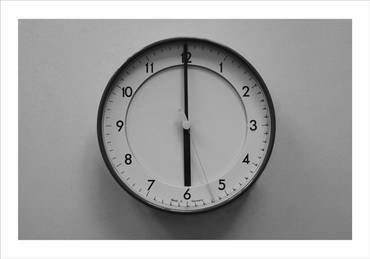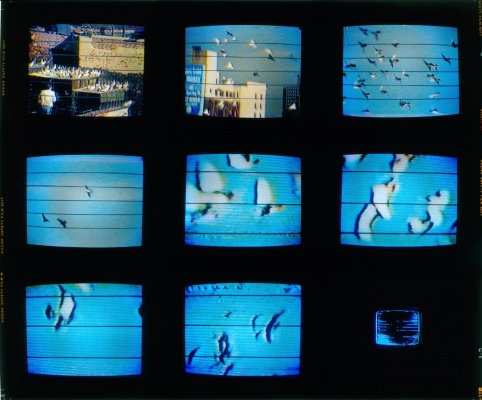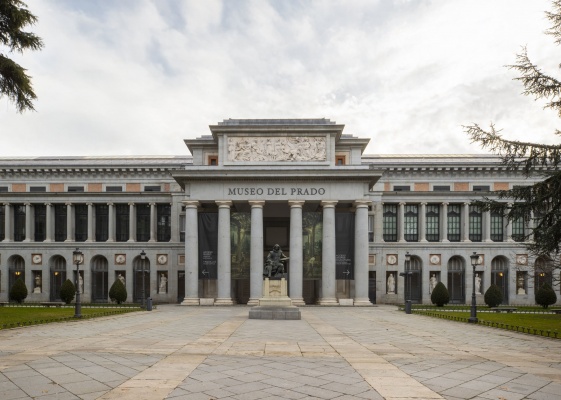Descripción de la Exposición It is curious when artists embark upon individual works that require many years to be completed. In the world of contemporary photography several examples of spectacular commissions that result in monographic works that offer a more or less tensive response to the original brief can be found. I remember discussing this project with André Cepeda about four years ago. A handful of his pictures were linked to spaces in the city of Porto, where we both lived, and despite being exterior settings, they achieved to provide a sense of intimacy: interior patios, plants in small open-air recesses, elements of exasperating banality to which the artist conferred it's intrinsic dignity. I soon realised that he intended to systemise his wanderings through the city, as it was perceived by the artist himself but without revealing the area's inner reality. He began a process of physical demarcation of the territory, meeting inhabitants who normally remain hidden from passers-by. One of the typical phenomena of Porto's urban development of the late 19th century and the early 20th century is the so-called islands: behind a nondescript street entrance, we find a long line of houses offering minimum conditions of habitability, thus creating a small self-enclosed urban nodule (very different from workers' houses in comparable neighbourhoods in Lisbon, that were structured around central courtyards). This urban design mimics patterns found at the dawn of the Industrial Revolution in the United Kingdom (the famous back to back houses), but normally embodies a smaller and more wretched vision. These developments were carried out in response to Porto's growing industrialisation, but now they are obsolete, left as relics of industrial archaeology. The working class has effectively disappeared and these areas nowadays belong to a significant subset of the elderly, unemployed or economically under-privileged. Nevertheless, it should be emphasised that there is often a strong sense of community in such neighbourhoods and some of these areas now have considerably more pleasant conditions than those existing at the time of their construction, where basic sanitation and plumbing were achieved at best via improvised shared solutions. André Cepeda began his work on the basis of this specific territorial and urban demarcation. As I explained above, I was impressed by the way in which the project was developed: its conceptual rigour and discipline obliged the artist to spend days on end looking for places that held significance for him, looking for details that he expertly captures and which immediately endow a sense of pungent universality to the picture in question. The paramount question arises throughout this process, the second part of this eloquent diptych: his relationship with people, the way in which he obstinately involves himself in the exercise of creating portraits. The artist dives into a universe that enables him to penetrate the ultimate meaning of this work. In the midst of a universe corroded by sadness, melancholy, abandonment and solitude, we encounter poses and gazes that hint at a vertiginous journey where intimacy still has the power to lick overly exposed wounds. In André Cepeda's pictures, sexuality is not exposed as an element of capitalist exploration, although this dimension is frequently present in this context, in order to obviate a sense of hangover from drug dependency. The exhibition of bodies actually conveys a final shred of personal dignity, the sexual relationship itself is a suspended moment in the unbearable breathing of everyday existence. This is an odd process: André Cepeda captures chaotic, claustrophobic interiors, marks of self-destruction, moments of reinterpretation of still lives and thereby shatters the conventionality of private spaces as we know them. These are the harshest moments of his project. The same occurs with the exteriors: cul-de-sacs, makeshift homes, grey skies, urban sprawls densify the reception of a reality that many manage to avoid, but which other countless people are obliged to carry with them in their memories and daily existence. Paradoxically, as I mentioned before, the artist succeeds in maintaining an approach that is neither too pessimistic nor commiserative. It would be much easier to show misery and degradation in its brute form. But this is the territory of sensationalistic press, emotional spectators and voyeurs. Each picture in this project reproduces a shared moment. We feel it in the depth of the gazes. The distance between the photographer and the subject is almost palpable, the whispers, the few words exchanged at the time of the greatest concentration, the silence, the certainty of silence, can be felt everywhere. Such communion can only be attained by those who share. And this sense of sharing is above all an act of trust. How do I position myself before this reality? Whose reality is this? Is the author's one? Is it the one of the places and their inhabitants? No, it is not. Ultimately, the strength of this project consists of its atypical and timeless dimension given that it plays an intelligent game with the History of Art itself - we could trace a formal genealogy and a more or less obvious iconography within some of these works - by universalising specific elements. It is a non-fictionalised reality. But how could we avoid fictionalising this reality? Sucked inside, to the project's internal coherence via the complexity presented herein, in the form of a book, the spectator becomes the great storyteller. In response to the transitory nature of the spectacularity, to the mediocrity of the digitalisation of the world - as found in much of contemporary photography - André Cepeda highlights the urgency of aesthetic, ethical and, in the final analysis, political sharing.

Grandes Eventos, 19 ene de 2012
El portugués Daniel Blaufuks inaugura su primera exposición en el Reino Unido
Por ARTEINFORMADO
Esta semana, dentro del panorama luso y la actividad expositiva desplegada por sus artistas, comenzamos con " Works on Memory", primera exposición en el Reino Unido del artista Daniel Blaufuks ...

Exposición. 08 may de 2025 - 14 sep de 2025 / MNAC - Museu Nacional d'Art de Catalunya / Barcelona, España

Formación. 30 oct de 2025 - 11 jun de 2026 / Museo Nacional del Prado / Madrid, España